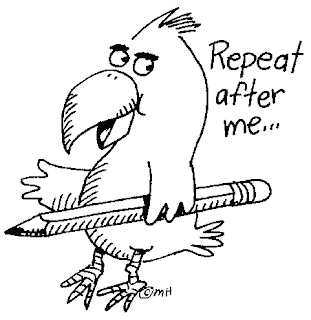Martins' Business English
Wednesday, 25 April 2012
Email Writing
GUIDELINES

> Subject: give the message a subject/title. E-mails without a subject may not be opened because of a fear of viruses and especially note that it is very easy to forget to type this important information.
> Subject content: keep the subject short and clear but avoid such headings as "Hello", "Bad news", "Message from Peter" - these headings are common in messages containing viruses. Short but specific headings are needed.
e.g. Order N° XSY 33
> Greetings: start the message with a greeting so as to help create a friendly but business-like tone. The choice of using the other name versus the last name will depend on who you are writing to. However, if the receiver is more senior to you, or if you are in doubt, it would be safer to use the person’s last/family name.
e.g. Dear Mr Smith, Dear Ms Starbucks.
It is also becoming quite common to write the greeting without a comma.
e.g. Dear Ms Dwason
e.g. Dear Mr Smith, Dear Ms Starbucks.
It is also becoming quite common to write the greeting without a comma.
e.g. Dear Ms Dwason
> Purpose: start with a clear indication of what the message is about in the first paragraph. Give full details in the following paragraph(s). Make sure that the final paragraph indicates what should happen next.
> Action: any action that you want the reader to do should be clearly described, using politeness phrases. Use expressions such as 'Could you...' or ' I would be grateful if...'.
> Attachments: make sure you refer to any attachments you are adding and of course make extra sure that you remember to include the attachment(s). As attachments can transmit viruses, try not to use them, unless you are sending complicated documents. If you use an attachment, make sure the file name describes the content, and is not too general; e.g. 'message.doc' is bad, but 'XY Report 2011.doc' is good.
> Action: any action that you want the reader to do should be clearly described, using politeness phrases. Use expressions such as 'Could you...' or ' I would be grateful if...'.
> Attachments: make sure you refer to any attachments you are adding and of course make extra sure that you remember to include the attachment(s). As attachments can transmit viruses, try not to use them, unless you are sending complicated documents. If you use an attachment, make sure the file name describes the content, and is not too general; e.g. 'message.doc' is bad, but 'XY Report 2011.doc' is good.
> Endings: end the message in a polite way. Common endings are:
Yours sincerely, Best regards, Best wishes, Regards,
If you did not put a comma after the greeting at the beginning of the message, then do not put a comma after the ending either,
e.g. Best wishes
e.g. Regards
Yours sincerely, Best regards, Best wishes, Regards,
If you did not put a comma after the greeting at the beginning of the message, then do not put a comma after the ending either,
e.g. Best wishes
e.g. Regards
Report Writing
A business report, sometimes referred to as a white paper, is one which helps organizations make decisions all the time. They are often written to inform and the audience for the report can be any combination of internal, external and/or technical, non-technical. Knowing your audience and outlining information carefully is critical to the success of your report.
Reports can be anything from a long memo (i.e. a single page) to a 50-page, well-organized and formatted analysis of a particular situation. Whatever their length, reports can effect enormous change because they often influence decisions made.
They are difficult to write. Why? Because they usually involve collecting, summarising and organising large quantities of information and making recommendations which make sense.
Typically, reports include the following sections: Introductions, Findings (body), Conclusion, Recommendations. If very long, the body will be subdivided into many sections and paragraphs.
Tips:
> The language you use in any report should be simple and clear (avoid phrases such as "in order to" when "to" will work) .
> Never add extra phrases only to impress and never disguise opinions as fact.
> Make it as short as possible. People are very pressed for time and they do not have a lot of time to read what you have written.
> Short sentences, even bulleted lists of points are preferred over long, complex sentences. Try breaking each sentence into about 20 words.
> Write naturally
> Write from the reader's perspective. Make sure you include all the information the audience will need.
> Be specific. Reports should be concise and factual.
> Use simple tenses (normally the present simple) to express facts.
> Use the imperative form in the "Recommendations" section as these apply to the company as a whole.
The key to success when writing reports is to communicate your message clearly.
Thursday, 2 February 2012
Pronunciation

We always wonder how we can practise our English pronunciation at home, when the teacher is not there to correct us :-)
Well, check English Central. You'll have lots of fun too!
Giving presentations effectively - Tips
Watch this video on "How to Give an Effective Business Presentation" and take notes of the 8 steps mentioned + the tips.
Small talk - Coconuts or peaches?
Culture and small talk. Are you a coconut or a peach?
Before watching the video discuss the importance of small talk in business. Why do you think the man on the video uses coconuts and peaches to describe different types of people in relation to their small talk styles?
Wednesday, 25 January 2012
Socializing - Invitations

Have you ever been invited to a party that you didn't want to go? Find out how to turn down unwanted invitations in the future.
How to turn down an invitation
Subscribe to:
Comments (Atom)
